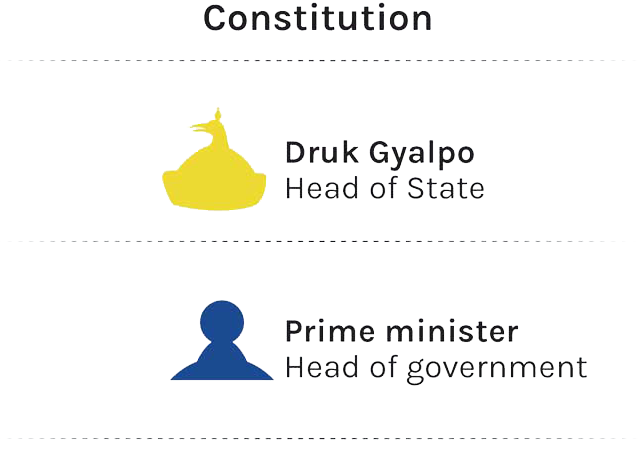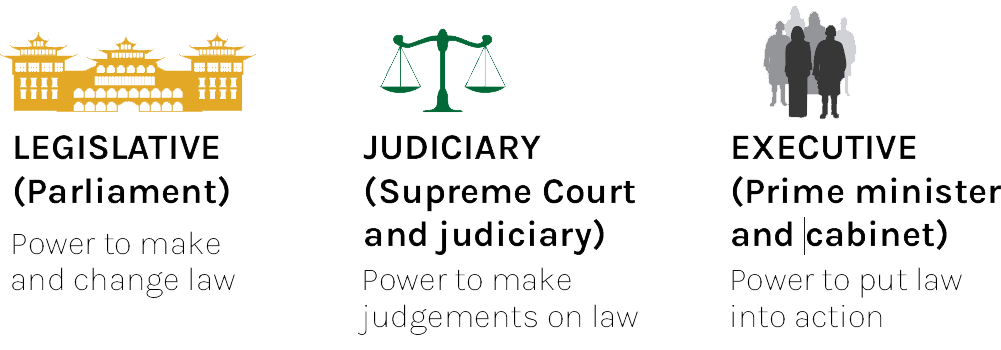System of Government
Democratic Constitutional Monarchy
Since 2008, Bhutan has been a Democratic Constitutional Monarchy with the Druk Gyalpo as the head of the state and the existence of multiple political parties. In a Constitutional Monarchy, the Monarch exercises authority in accordance with the Constitution.
Executive power to run the country is with the council of ministers or cabinet (Lhengye Zhuntshog) headed by a prime minister, who is the head of government. Power to make and amend laws and make decisions for the nation is with the bicameral Parliament, consisting of the Druk Gyalpo, the National Council and the National Assembly.
Branches of Government
The principles for democratic government in Bhutan are specifically stated in Bhutan's Constitution. Bhutan's system of government is made up of three branches with separate powers and responsibilities, modelled after the Westminster style of the United Kingdom. The three branches are the legislature, the executive and the judiciary.
Parliament is the legislative branch which debates and passes laws, the executive branch commonly known as the (elected) government implements the laws and the judiciary interprets the laws through the courts. The separation of powers of the three branches of government is also known as the system of checks and balances as each branch is given certain powers to check and balance the other branches.
 English
English
 རྫོང་ཁ
རྫོང་ཁ


